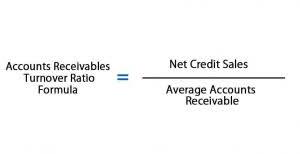- Niciun produs în coș
How Does Cash And Cash Equivalents Report In The Balance Sheet?
Content

The information featured in this article is based on our best estimates of pricing, package details, contract stipulations, and service available at the time of writing. Pricing will vary based on various factors, including, but not limited to, the customer’s location, package chosen, added features and equipment, the purchaser’s credit score, etc. For the most accurate information, please ask your customer service representative.
- However, such an analysis may be excessively conservative if there are receivables that can be readily converted into cash within a few days; in this case, receivables should also be included in the analysis.
- Cash includes, but is not limited to, currency on hand, demand deposits with banks or financial institutions, and other accounts with general characteristics of demand deposits.
- Cash flow statements divide cash flows into three categories based on the nature of their source transactions – operating, investing or financing activities.
- Short-term government bonds are mostly issued by governments to support government’s spending.
- Cash equivalents are highly liquid investments that can be converted into cash easily.
- A cash equivalent includes, but is not limited to, tokens, chips, coupons, vouchers, payout slips and tickets, and other items to which a gaming operation has assigned an exchange value.
For an instrument to be considered a cash equivalent, the risk of the investment losing its value must also be insignificant. While publicly traded stock could be easily sold and converted into cash, it would not be considered a cash equivalent because there is a risk that its value could decrease. First, owners and investors can contribute money to the business in exchange for a percentage ownership in the company. Second, the company can generate money from selling goods or services to customers as part of its ongoing operations.
Examples Of Cash And Cash Equivalents In A Sentence
Cash flows are classified and presented into operating activities (either using the ‘direct’ or ‘indirect’ method), investing activities or financing activities, with the latter two categories generally presented on a gross basis. Cash RatioCash Ratio is calculated by dividing the total cash and the cash equivalents of the company by total current liabilities. It indicates how quickly a business can pay off its short term liabilities using the non-current assets. Balance SheetA balance sheet is one of the financial statements of a company that presents the shareholders’ equity, liabilities, and assets of the company at a specific point in time.

So if a corporate bond matures within three months, but the company that issued it may not be able to settle the debt, one would not be able to include that as a cash equivalent. Examples of cash equivalents for financial reporting purposes include money market instruments, treasury bills, short-term government bonds, marketable securities and commercial paper.
Cash Equivalents Video
Cash is a portfolio diversification tool as well as a way businesses generate higher returns in the short-term. It is a clear reflection about the overall ability of the company to meet its day-to-day expenses and ensure that they honor their financial commitments on time. The overall reasoning behind the proper calculation of Cash and Cash Equivalents is that it is directly related to the overall liquidity structure of the company. Therefore, it can be seen that Cash and Cash Equivalents are a group of assets that the company owns. Check out more information and resources on not-for-profit financial reporting. Cash can also be used as a reserve against unforeseen business problems, such as momentary decrease in revenues or a downturn in financial markets. FundsNet requires Contributors, Writers and Authors to use Primary Sources to source and cite their work.
Amount of increase of investment in equity security measured at fair value with change in fair value recognized in net income (FV-NI). The amount of expense recognized in the current period that reflects the allocation of the cost of tangible assets over the assets’ useful lives.
Examples of demand deposit accounts include checking accounts and savings accounts. All demand account balances as of the date of the financial statements are included in cash totals.
Examples Of Cash Equivalents
Preferred stocks can be included within three months of the redemption date. Treasury BillsTreasury Bills (T-Bills) are investment vehicles that allow investors to lend money to the government. Petty cash is a small amount of cash that is used for payment of insignificant expenses and the amount of it may vary depending on the organisation. For some entities $50 is adequate amount of cash, whereas for others the minimum sum should be $200. Petty cash funds must be safeguarded and recorded in order to avoid thefts. Often there is a custodian appointed who is responsible for the documentation of petty cash transactions. Cash in checking accounts allow to write checks and use electronic debit to access funds in the account.
As an example, consider cash balance in the 2014 balance sheet of Apple Inc. Companies keep these for the purpose of meeting short-term cash commitments rather than for investment, or other purposes. Thus companies want a cash cushion to weather unexpected situations such as a shortfall in revenue, repair or replacement of machinery, or other unforeseen circumstances not in the budget. Is a short-term debt obligation backed by the Treasury Dept.of the U.S. government. T-bills generally have a maturity of less than one year and are sold in denominations of $1,000 up to a maximum purchase of $5 million. Likewise, long-term investments have a maturity of greater than 12 months and are not classified as Cash Equivalents. Cash Equivalents have a maturity of fewer than 3 months, whereas short-term investments mature within 12 months.

In the first example, Xerox Corporation has chosen to separate cash equivalents from cash. Amount of cash inflow from maturity, prepayment and call of investment in debt security measured at fair value with change in fair value recognized in other comprehensive income (available-for-sale). Amount of distribution received from equity method investee for return of investment, classified as investing activities. Excludes distribution for return on investment, classified as operating activities.
Safeguard Cash And Checks
Exceptions can exist for short-term debt instruments such as Treasury-bills if they’re being used as collateral for an outstanding loan or line of credit. In other words, there can be no restrictions on converting any of the securities listed as cash and cash equivalents. Cash equivalents are investments that can readily be converted into cash. The investment must be short term, usually with a maximum investment duration of three months or less. If an investment matures in more than three months, it should be classified in the account named „other investments.” Cash equivalents should be highly liquid and easily sold on the market.
Cash and cash equivalents under the current assets section of a balance sheet represent the amount of money the company has in the bank, whether in the form of cash, savings bonds, certificates of deposit, or money invested in money market funds. Amounts generally described as restricted cash and restricted cash equivalents are required to be included in the total cash and cash equivalents in the statement of cash flows.
Treasury Bills
Not-for-profit entities also must disclose information about the nature of restrictions on their https://www.bookstime.com/. This will provide insight into the availability and uses of amounts generally described as restricted cash and restricted cash equivalents on the statement of financial position. A balance sheet is different from other financial statements because it describes a specific moment in time while the other statements describe activity over a period of time. As a result, the cash value on the balance sheet will only be accurate as of the end of the business on the date listed on the statement. When you receive a balance sheet, the current balance of cash might be very different from what is reported on the statement. Cash is an asset, which means it is included in a business’s balance sheet. Since cash is highly liquid and can be used immediately to settle a business’s debts, it is included in the current asset section of the balance sheet.
- In practice, the cash and cash equivalents account is excluded from the calculation of net working capital .
- However, oftentimes cash equivalents do not include equity or stock holdings because they can fluctuate in value.
- The investment must be short term, usually with a maximum investment duration of three months or less.
- That allows the business to earn a higher interest rate than if it were to stick the cash in a corporate savings account.
- If there is any question about whether a financial instrument can be classified as a cash equivalent, consult with the company’s auditors.
Internal controls encourage good stewardship, safeguard assets, promote accurate financial reporting, prevent mishandling and loss of funds, and protect employees from allegations of impropriety. These are commercial paper, money market funds, government bonds, marketable securities, and Treasury bills. In other words, a cash equivalent is an asset that is so liquid that it can be consideredcashfor practical purposes. Stocks and other trading securities that can be easily sold on a public market are easily converted into cash that they can be considered cash for mostfinancial reporting. Yes, CDs are short-term securities that are easily converted into a known amount of cash in a short period of time.
Cash is physical money, and cash equivalents are assets that can easily convert to specific amounts of cash. Explore these two concepts in examples of the calculations used for balancing cash equivalents. Accounts ReceivableAccounts receivables is the money owed to a business by clients for which the business has given services or delivered a product but has not yet collected payment.
Objective Of Ias 7
Another cash equivalent accessible as an ETF is short-term corporate bond ETFs. A lesser-known cash equivalent is short-term government floating rate notes available as an exchange-traded fund . For investors in higher tax brackets, short term municipal bond funds may be attractive. These funds invest in high-quality muni-bonds, are liquid, and can boost the tax-equivalent yield, especially compared to corporate bond funds.
Wellness And Work Life Balance
From this definition, “quick assets” can be converted to cash within 90 days while “current assets” can be converted to cash within one year. Similarly, accounts receivable are not cash equivalents since they carry a conversion time over 15 days.
What Is The Difference Between „source” & „use” In Managerial Accounting?
Original maturity means original maturity to the entity holding the investment. For example, both a three-month US Treasury bill and a three-year Treasury note purchased three months from maturity qualify as cash equivalents. However, a Treasury note purchased three years ago does not become a cash equivalent when its remaining maturity is three months. Restricted cash is the amount of cash and cash equivalent items which are restricted for withdrawal and usage. Restricted cash can be also set aside for other purposes such as expansion of the entity, dividend funds or „retirement of long-term debt”.
You will find sample IFRS statements of cash flows in our Model IFRS financial statements. A financial instrument is only a cash equivalent if it has a low risk of losing its value and will mature within three months from when the financial statements are prepared. Cash equivalents are securities that can easily and quickly be converted into cash.
Trackbacks and pingbacks
No trackback or pingback available for this article.


Leave a reply
Trebuie să fii autentificat pentru a publica un comentariu.